3 How to examine a sick person
3 How to examine a sick person
3 How to examine a sick person
Create successful ePaper yourself
Turn your PDF publications into a flip-book with our unique Google optimized e-Paper software.
30<br />
Where There Is No Doc<strong>to</strong>r 2011<br />
GENERAL CONDITION OF HEALTH<br />
Before <strong>to</strong>uching the <strong>sick</strong> <strong>person</strong>, look at him carefully. Observe how ill or weak he<br />
looks, the way he moves, how he breathes, and how clear his mind seems. Look for<br />
signs of dehydration (see p. 151) and of shock (p. 77).<br />
Notice whether the <strong>person</strong> looks well nourished or poorly nourished. Has he been<br />
losing weight? When a <strong>person</strong> has lost weight slowly over a long period of time, he may<br />
have a chronic illness (one that lasts a long time).<br />
Also note the color of the skin and eyes. These sometimes change when a <strong>person</strong><br />
is <strong>sick</strong>. (Dark skin can hide color changes. So look at parts of the body where the skin<br />
is pale, such as palms of the hands or soles of the feet, the fingernails, or the insides of<br />
the lips and eyelids.)<br />
• Paleness, especially of the lips and inside the eyelids, is a sign of anemia<br />
(p. 124). Skin may also go lighter as a result of tuberculosis (p. 179), or<br />
kwashiorkor (p. 113).<br />
• Darkening of the skin may be a sign of starvation (see p. 112).<br />
• Bluish skin, especially blueness or darkness of the lips and fingernails, may<br />
mean serious problems with breathing (p. 79, 167, and 313) or with the heart (p.<br />
325). Blue-gray color in an unconscious child may be a sign of cerebral malaria<br />
(p. 186).<br />
• A gray-white coloring, with cool moist skin, often means a <strong>person</strong> is in shock<br />
(p. 77).<br />
• Yellow color (jaundice) of the skin and eyes may result from disease in the liver<br />
(hepatitis, p. 172, cirrhosis, p. 328, or amebic abscess, p. 145) or gallbladder<br />
(p. 329). It may also occur in newborn babies (p. 274), and in children born with<br />
<strong>sick</strong>le cell disease (p. 321).<br />
Look also at the skin when a light is shining across it from one side. This can show<br />
the earliest sign of measles rash on the face of a feverish child (p. 311).<br />
TEMPERATURE<br />
It is often wise <strong>to</strong> take a <strong>sick</strong> <strong>person</strong>’s temperature, even if he<br />
does not seem <strong>to</strong> have a fever. If the <strong>person</strong> is very <strong>sick</strong>, take the<br />
temperature at least 4 times each day and write it down.<br />
If there is no thermometer, you can get an idea of the<br />
temperature by putting the back of one hand on the<br />
<strong>sick</strong> <strong>person</strong>’s forehead and the other on your own or<br />
that of another healthy <strong>person</strong>. If the <strong>sick</strong> <strong>person</strong> has<br />
a fever, you should feel the difference.<br />
It is important <strong>to</strong> find out when and how the fever comes, how long it lasts, and how<br />
it goes away. This may help you identify the disease. Not every fever is malaria, though<br />
in some countries it is often treated as such. Remember other possible causes. For<br />
example:<br />
• Common cold, and other virus infections (p. 163). The fever is usually mild.<br />
• Typhoid causes a fever that goes on rising for 5 days. Malaria medicine does not<br />
help.<br />
• Tuberculosis sometimes causes a mild fever in the afternoon. At night the <strong>person</strong><br />
often sweats, and the fever goes down.




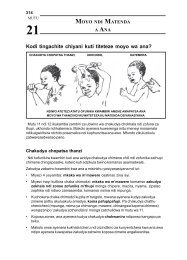
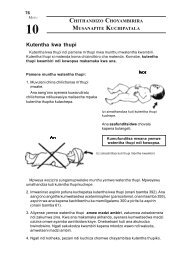

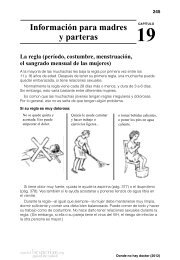
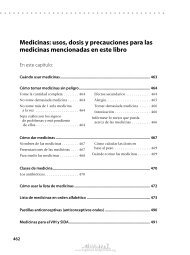


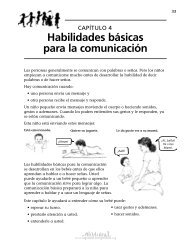


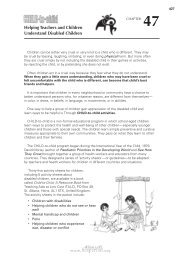
![kl/jf/ lgof]hg](https://img.yumpu.com/10041849/1/184x260/kl-jf-lgofhg.jpg?quality=85)
